Elephants are sedated, lifted by crane on to transporter trucks and moved to another safari park to control the herd’s growing population
New footage has revealed exactly how African conservationists moved several six-ton elephants from one national park to another by drugging them and hoisting them into large trucks.
You can see sleepy elephants hanging out in huge harnesses as cranes pack them into trucks to be moved from Liwonde National Park to Kasungu National Park, both in Malawi, East Africa, to reduce their population and end human-wildlife conflict illuminate the area.
The animals, which had been stunned, were lifted up with a gigantic hoist. Frank Weitzer, a freelance photojournalist and field guide, admitted that transporting it was no easy feat.
Frank said: “Loading bull elephants (males) poses a challenge to capture teams due to the size and weight of the males, which is much greater than that of the females.
‘In the past, bulls were hoisted into the transport crates with ropes attached to their ankles – the safest way to pull an elephant up with a crane – and laid on their sides before being given the wake-up drug.
The majestic animals were stunned before being lifted with a giant hoist
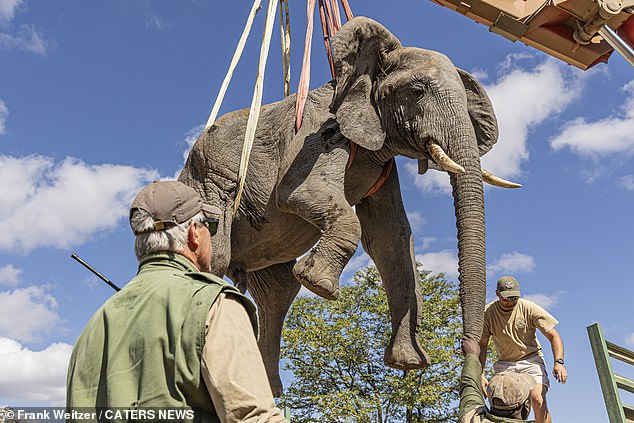
African elephants can weigh up to six tons
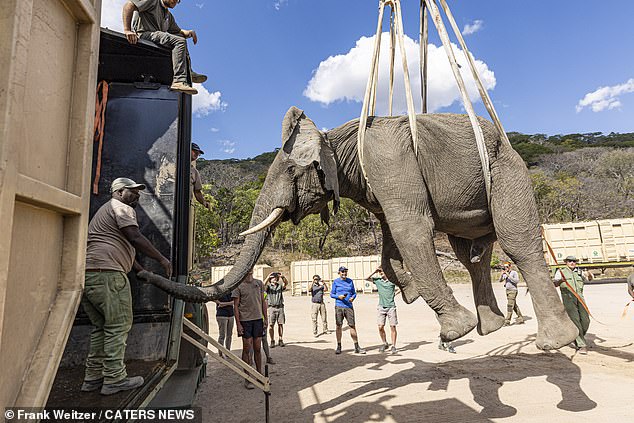
Male elephants are reportedly more difficult to move than females, due to their size
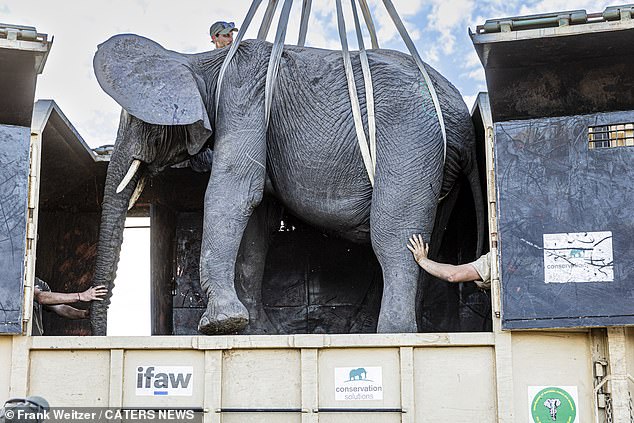
Conservation Solution built a custom harness and harness to lift the elephants
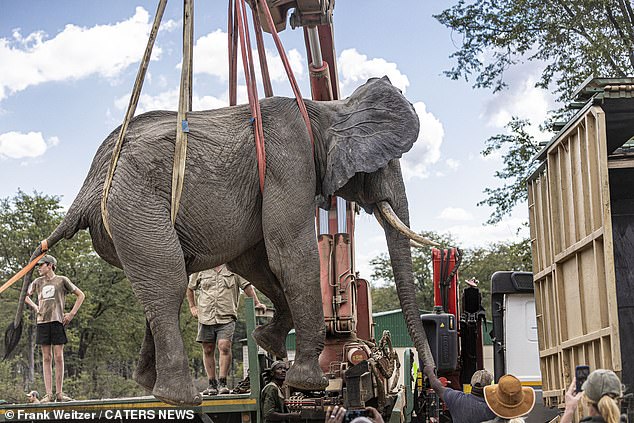
African elephants are endangered animals, whose population size is decreasing every year
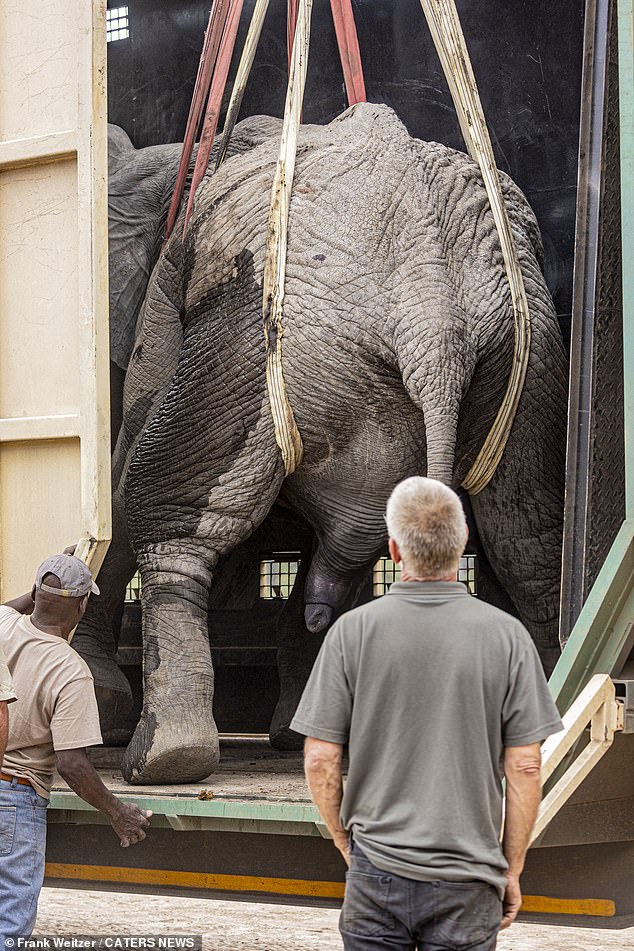
African elephants have been hit hard by habitat changes and poaching by hunters
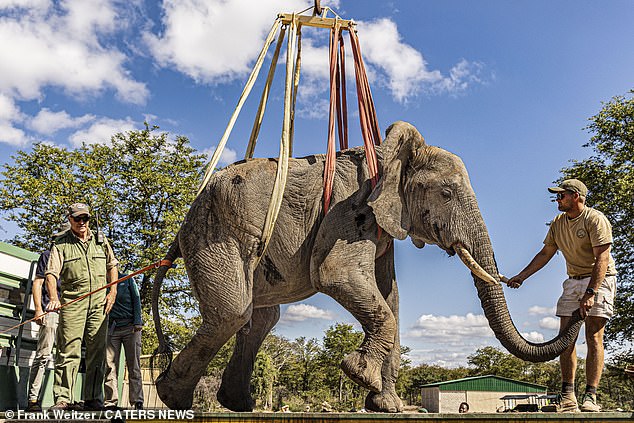
Frank Weitzer said watching the experience was “enchanting.”
‘Sometimes the bulls found it a bit difficult to get up within the confines of the wake-up box.
‘Conservation Solution’s trapping team devised a method whereby the enormous bull elephants were lifted using a custom-made harness that held the bull upright.
“Once lowered into the crates, the bulls are given the antidote while standing upright; their feet are already touching the bottom of the crate.
‘On awakening, the harness can be slipped off the bulls and the laborious process of getting up can thus be effectively circumvented. This technique has greatly simplified the loading process of the bulls.’
The photographer described the event, which was organized by African Parks in partnership with Conservations Solutions and the Malawian government, as “enchanting”.
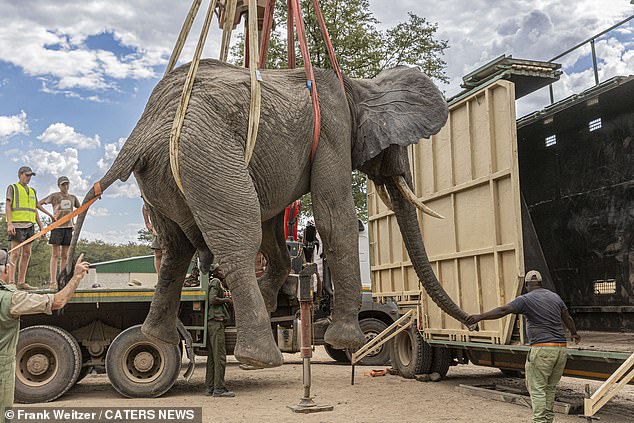
Population fragmentation, with elephant families being split up, has also contributed to the endangerment of the African elephant

African elephants are generally found in Central African states, but there are populations in West African countries
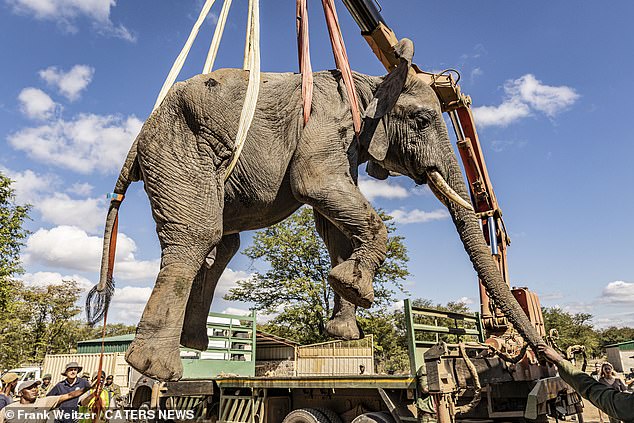
Frank said the new lifting technology has ‘tremendously facilitated’ the process of moving the animals

The elephants were given an antidote to wake them up once they were upright and in the trucks
Frank added: ‘It was mesmerizing to see a six-ton animal practically floating right in front of your camera, seemingly able to jump out of harness at any second, but of course being deep in the land of kink .
‘As always, when I met these giants up close, I had to hold my breath and pinch myself to make sure I wasn’t dreaming!’
According to the International Union of Conservation of Nature, African elephants are at high risk of extinction.
Populations of the beasts, which can weigh up to six tonnes, have declined year on year thanks to habitat loss and poaching.
Population fragmentation, with families breaking up, is also causing elephant numbers to decline.
African elephants are generally found in Central African states, but there are populations in West African countries including Mali, Senegal and Guinea.
